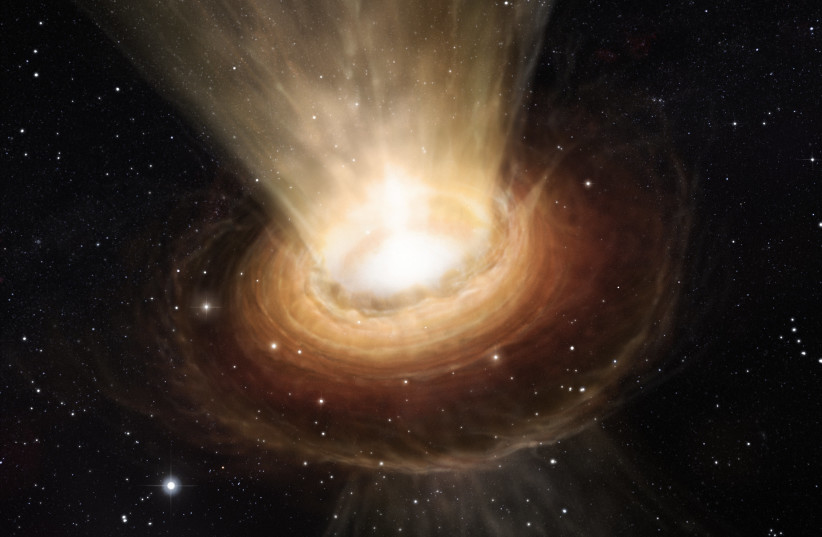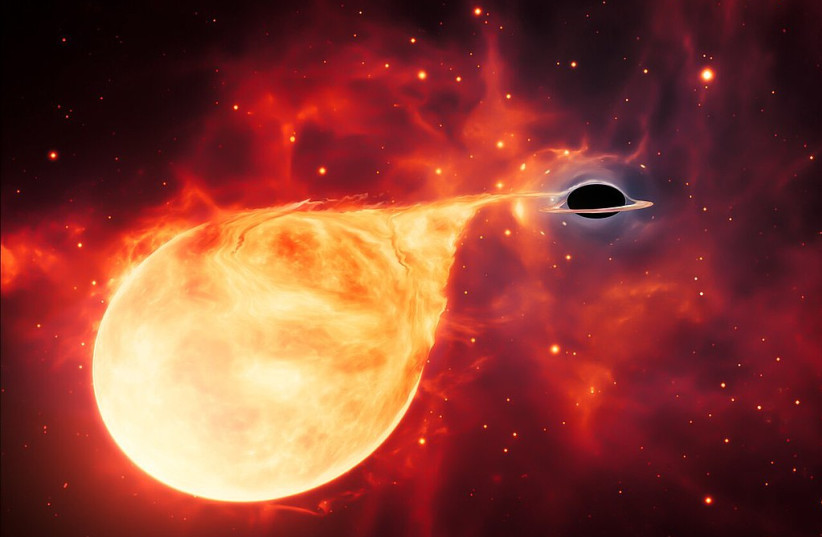Scientists unveil secrets of star violently torn apart near black hole
Astronomers have recently encountered numerous instances of "tidal disruption events."
Astronomers have meticulously examined the remnants of a star violently torn apart after venturing too close to a colossal black hole, resulting in its inner components being expelled into the cosmos.
By leveraging NASA's Chandra X-ray Observatory and ESA's XMM-Newton, researchers scrutinized nitrogen and carbon concentrations near a black hole previously known for disintegrating a star.
Quick Look: A Giant Black Hole Destroys a Massive Star
The study was published in the peer-reviewed Astrophysical Journal Letters.
The prevailing theory among astronomers suggests that these particular elements were initially forged within the star before it underwent the cataclysmic disruption upon approaching the gravitational pull of the black hole.
"We are seeing the guts of what used to be a star," said Jon Miller of the University of Michigan, who led the study in a statement. "The elements left behind are clues we can follow to figure out what sort of star met its demise."

Astronomers have recently encountered numerous instances of "tidal disruption events." However, the ASASSN-14li has seized attention due to its distinctive characteristics. ASASSN-14li was discovered in November 2014 and was considered the nearest tidal disruption event to Earth within a decade - just 290 million light-years away. Its proximity enabled researchers to get a more intricate understanding of the obliterated star's characteristics.
Miller's team employed theoretical models to refine estimations of the nitrogen and carbon quantities encircling the black hole, surpassing previous analytical efforts.
"These X-ray telescopes can be used as forensic tools in space," said co-author Brenna Mockler of Carnegie Observatories and the University of California, Los Angeles. "The relative amount of nitrogen to carbon that we found points to material from the interior of a doomed star weighing about three times the sun's mass."
The star, they discovered, is one of the most massive ever observed to be torn apart by a black hole, making it a noteworthy celestial event.
"ASASSN-14li is exciting because one of the hardest things with tidal disruptions is being able to measure the mass of the unlucky star, as we have done here," said co-author Enrico Ramirez-Ruiz of the University of California, Santa Cruz. "Observing the destruction of a massive star by a supermassive black hole is spellbinding because more massive stars are expected to be significantly less common than lower-mass stars."
How could this work influence forthcoming research?
The capacity to gauge the masses of stars that undergo tidal disruption potentially equips astronomers with a means to detect the presence of star clusters encircling supermassive black holes in galaxies much farther away.



No comments:
Post a Comment